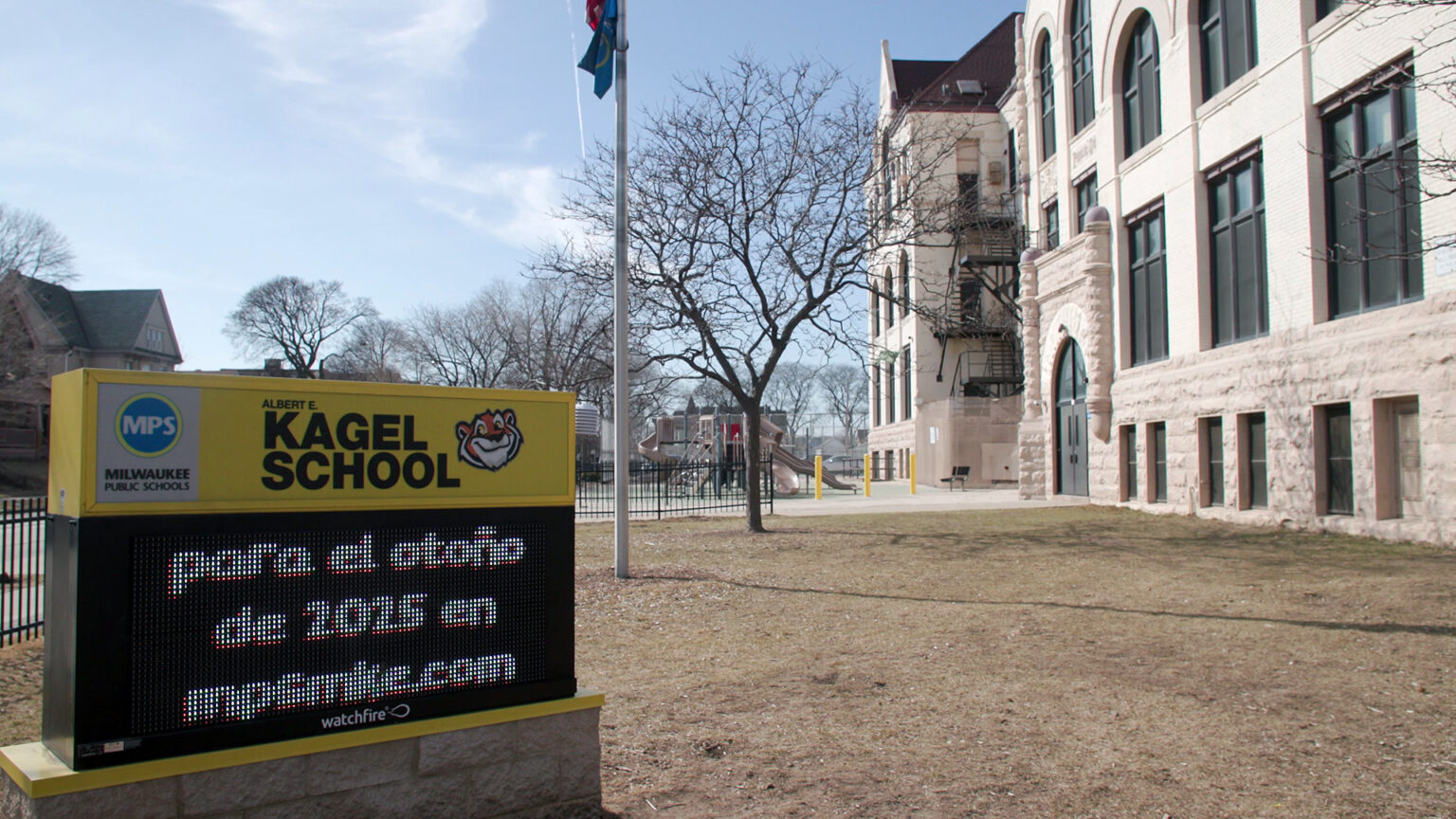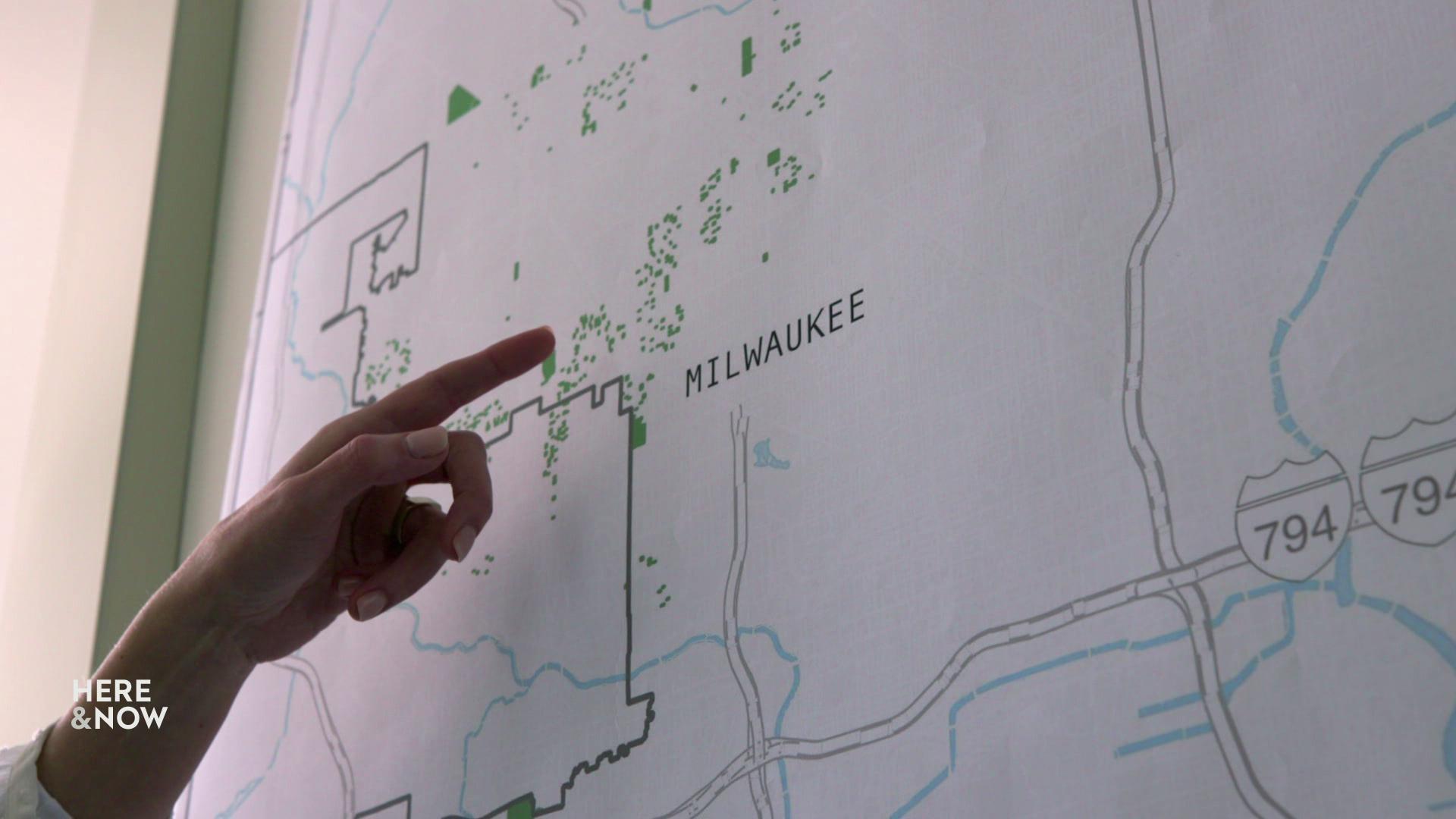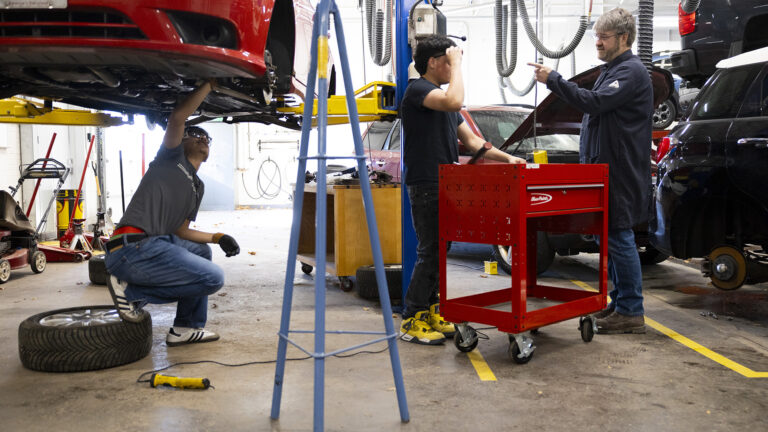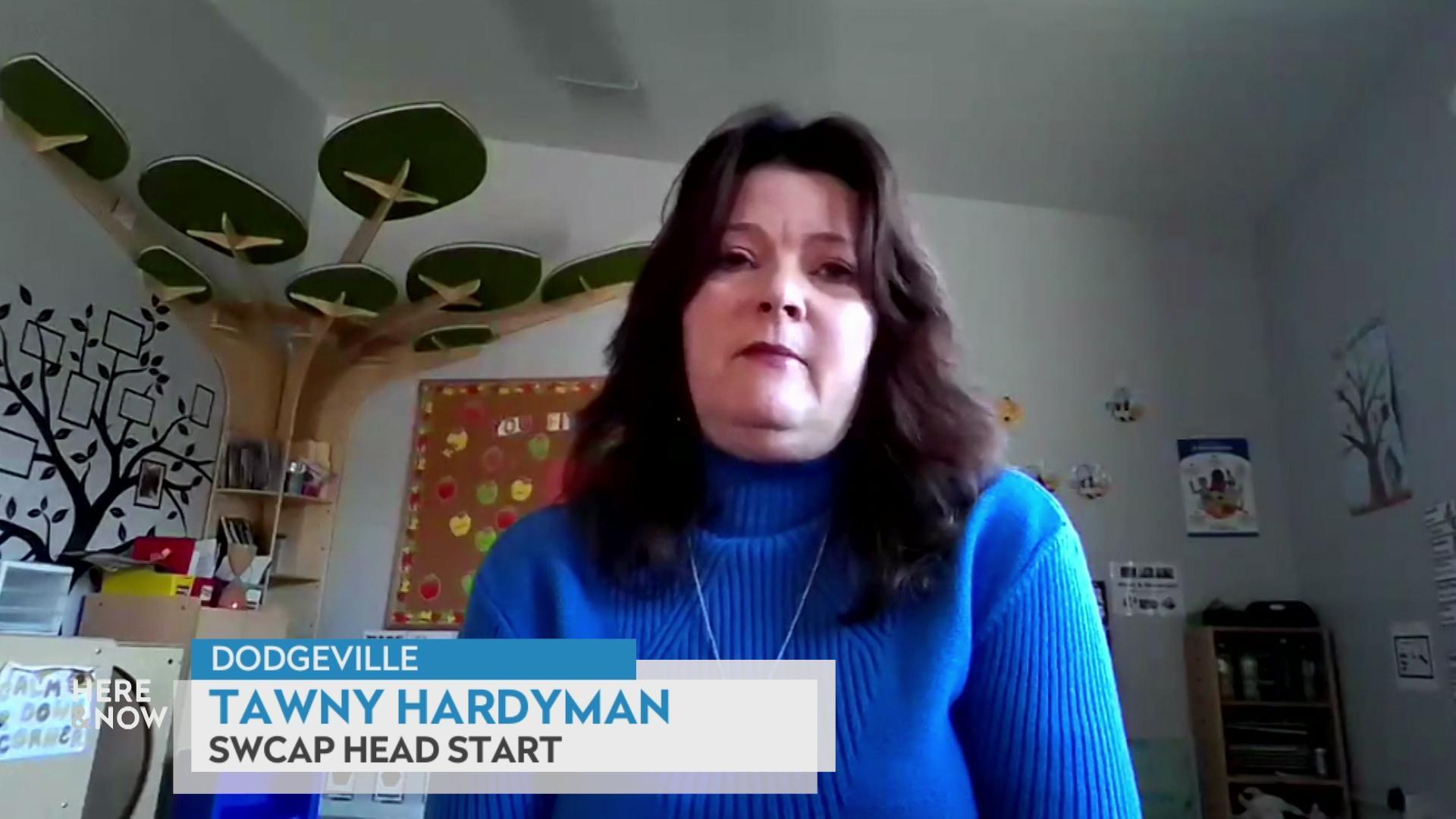Addressing lead contamination in Milwaukee schools is likely to be an extended process
Health hazards related to lead paint contamination have been identified in seven buildings in the Milwaukee school district and more are anticipated — city health officials and parents are pushing for plans to continue addressing the problem.
April 24, 2025 • Southeast Region

A playground stands empty in front of Albert L. Kagel School on the south side of Milwaukee on March 12, 2025. Serving K4 through 8th grade, Kagel is one of seven schools in the district where lead paint contamination has been identified. Remediation work was conducted while students were in class. (Credit: PBS Wisconsin)
For Kristen Payne and other parents, the situation with lead contamination in Milwaukee’s public schools is untenable. She said she hears every day from parents who are afraid to send their children to a school that might be unsafe.
“We’ve been really frustrated and disappointed,” said Payne, founder of Lead Safe Schools MKE, a parent-led group seeking to ensure lead remediation in the city. “It’s scary to think that there’s buildings out there that are unsafe, that our children are continuing to go into, that our staff are continuing to go to work every day and continue to be exposed to a poison.”
Lead hazards have been found in seven schools in the district so far.
“We continue to hear from the health department that they expect this is sort of the tip of the iceberg,” she said. “There are going to be many more buildings implicated.”
A lead safety resolution that would tighten oversight over Milwaukee Public Schools was referred by the district to its Committee on Accountability, Finance and Personnel at a school board meeting on April 22.
The resolution would change the way the district handles regular lead inspections and lead remediation. It would require annual school inspections, create an online dashboard to show progress toward remediation, and develop new lead training requirements for all school staff.
Through Lead Safe Schools MKE, Payne has worked to organize its community of parents and concerned citizens.
The group has held multiple informational sessions, created templates for city residents to contact their legislative officials, and worked with newly elected Milwaukee Board of School Directors President Missy Zombor to help craft the resolution.
“Part of it is also coming together and supporting one another through a deeply stressful time,” Payne added. “Many families have had their schedules upended for going on five weeks now with the school closures. So it’s been really stressful for a lot of families.”
Four of the seven schools affected have been shut down while lead remediation work was completed. Three of those schools — Starms Early Childhood Education Center, Fernwood Montessori School and LaFollette School — still have yet to reopen as of April 24.
“All indicators are pointing [in] the direction that this is the right thing to do, no matter what you’re concerned about,” Payne said in an earlier interview with “Here & Now,” conducted on March 12.
Local officials are warning that the odds of identifying lead contamination in another school is very high.
“Our investigation is not concluded and if we need to close more schools and issue more orders, our department is prepared to do that,” said Milwaukee Commissioner of Health Mike Totoraitis. “Because every student here in our city deserves to have a safe learning environment.”
At least 100 of the more than 150 total buildings in the district were built before 1978, when lead-based paint was officially banned in the United States. Parents in Milwaukee have been hoping for a public health emergency declaration, but Totoraitis said that action wouldn’t solve much.
“In this case declaring an emergency wouldn’t have afforded me any different authority to say close a school or to require testing of students,” he explained in a “Here & Now” interview published on April 18. “The other really important part is that an emergency declaration doesn’t actually release any funds. So there aren’t, there isn’t like a pot of a million dollars just waiting to be tapped for this moment.”
The cost to clean up lead can be high. According to the district, it has cost $1.8 million so far to remediate the seven schools. The school district has indicated it might try to work with the Milwaukee City Attorney to sue paint manufacturers, which would help boost funding to continue this work.
Similar lawsuits have been brought before — a 2019 lawsuit in California resulted in awards of $305 million for multiple communities — but they are not usually successful. That same year, three Milwaukee men won a $6 million settlement against Sherwin-Williams, but an appeals court overturned the verdict in 2021.
As it stands, the school district will continue to pay for all of the lead remediation costs.
The lead safety resolution will be taken up by the school district committee at a regular meeting in May. If it gets passed then, the full school board would likely vote on the resolution in late May or June.
The Milwaukee Health Department is also planning to release a plan for when and how other potentially affected schools will be tested for contamination.
“As we found, schools like Maryland Avenue Montessori School have a lead hazard but have been maintained relatively well versus Fernwood, [which] was significantly worse than anyone had anticipated,” Totoraitis said. “So there’s a continuum of schools that are okay, and then there’s schools that need significant work.”
Totoraitis said a list of schools to be tested is being created based on the age of the building and students, plus recent renovations. For example, a very old school with young students and no recent renovations would be high on the list.
“There’s been irreparable harm that’s been done here, and we just don’t understand the scope of that yet,” Payne said.
 Passport
Passport











Follow Us